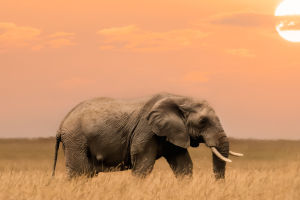Little Miracle
In the vast natural world, the diversity of life is astonishing, and one small mammal—the least weasel—stands out for its unique survival strategies and charming appearance.
As one of the smallest carnivorous mammals in the world, the least weasel is known for its agile body and nimble hunting skills, making it an indispensable part of the ecosystem.
1. Physical Characteristics
The least weasel is extremely small, with adult individuals typically measuring between 16 and 26 centimeters in length, and their tails accounting for about a third of their body length.
They weigh only 100 to 300 grams. Their fur color changes with the seasons; in summer, they are usually brown or yellowish-brown, while in the cold winter months, they turn pure white, helping them camouflage in the snow. This color change is not only beautiful but also provides crucial protection for their survival in the wild.
2. Behavioral Habits
Least weasels primarily inhabit forests, grasslands, and farmland, preferring to build nests in shrubs or rock crevices. They are extremely agile hunters, mainly preying on small rodents such as field mice and house mice.
Interestingly, the least weasel has a very high metabolic rate, requiring frequent meals to maintain energy levels, so they often catch several prey items each day. Their hunting technique is highly nimble, allowing them to dart through tight spaces and approach their prey unnoticed, thanks to their flexible bodies and keen sense of smell.
3. Reproduction and Social Behavior
The breeding season for least weasels usually occurs in spring, with females selecting hidden locations to build nests, often in shrubs or underground.
Each litter can consist of 2 to 6 young, who begin to open their eyes about three weeks after birth and can become independent by six weeks. While least weasels are generally solitary animals, males, and females will come together during the breeding season and may engage in brief social interactions.
4. Ecological Role
In the ecosystem, least weasels play an important role. As small predators, they help control the populations of small rodents, maintaining ecological balance.
Additionally, they are prey for larger predators, such as foxes and raptors, placing them in a critical position within the food chain. This interdependent relationship makes least weasels essential for the health of the ecosystem.
5. Conservation Status
Despite their wide distribution in the wild, least weasels face significant threats due to human activities. Urbanization, agricultural expansion, and environmental pollution are reducing their habitats.
While populations remain stable in some areas, specific regions are experiencing severe habitat destruction. Therefore, protecting the habitats of least weasels and maintaining ecological balance is crucial for the survival of this small mammal.
Conclusion
The least weasel is not only a small miracle of nature but also a vital part of the ecosystem.
By understanding their behavioral habits, ecological roles, and the challenges they face, we can better appreciate and protect this delightful creature. In the future, it is hoped that people will focus on environmental conservation to protect least weasels and other precious species.


